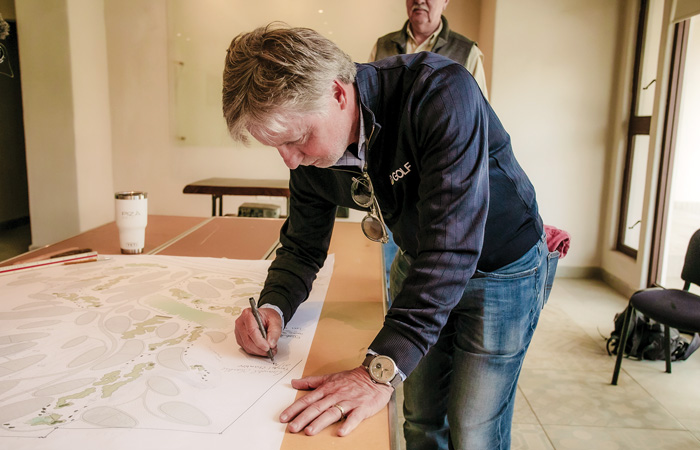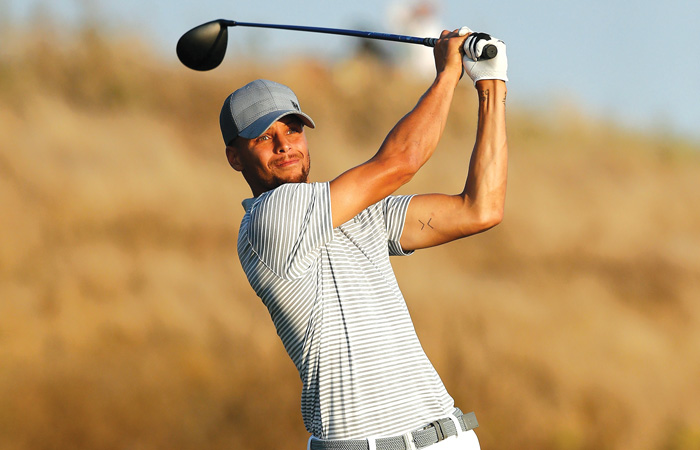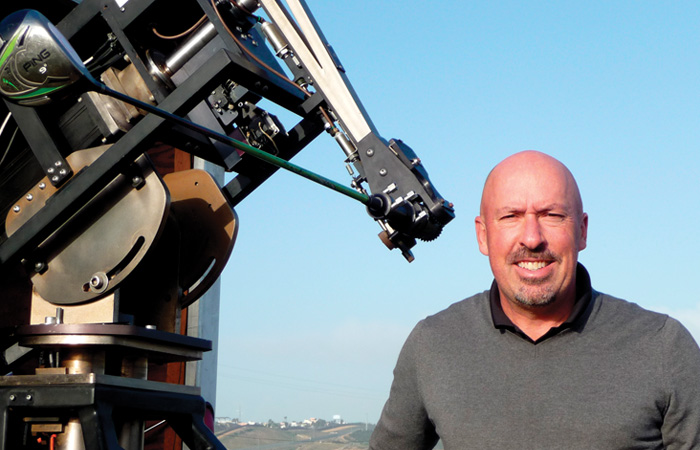March in Southern California means wonderful weather, lingering snow in the distant mountains, sunny skies and perfect golf course conditions. And the PGA TOUR Champions makes the most of all this by holding two back-to-back events in SoCal. The Hoag Classic at the Newport Beach Country Club, followed by the Galleri Classic at the Mission Hills Country Club.
It is perhaps the most fascinating of all professional tours because one can get to see – and even occasionally chat with – all the famous players of yesteryear. Who would not find it fascinating to watch the likes of Ernie Els (two-time winner and defending champion of the Hoag Classic), Fred Couples, Padraig Harrington, Vijay Singh, José Maria Olazábal and so many more?
Have these golfers, one wonders, made any swing changes, perhaps with the help of their coaches, to ensure that they maintain performance and reduce injury risk since becoming seniors?
South African Ernie Els, in California to defend his title, feels that the Newport Beach CC golf course, with its kikuyu grass fairways and poa annua greens and the wonderful weather of SoCal, remind him of home in South Africa, which makes him very comfortable playing at this venue. He thought the question about swing changes was a very good one. “A lot of the guys are doing exactly that, trying to prevent injury. We’re not spending as many hours on the range, as you can maybe see out there. We warm up, we work on a couple of things, but it’s really a lot of work away from the golf course – in the fitness trailer. You have to do some kind of program, specially to keep the lower back loose and strong and just overall fitness. Have a good physio and a good program.” His swing, however, is basically very much still the same as ever, even though some thought processes might have changed.

Irishman Padraig Harrington, who drives the ball at least 20 yards past the Tour average of about 311 yards, said about his swing changes, “I don’t know if we do less injury risk; I think we push the limit a little bit too much. The way I look at it – I work in the gym, I work with a physio to keep the injuries at bay, and I work with my coach to get the max out of my golf swing. I foresee I can play well for the next two years and then be injured and gone; I’m at that stage in my career. I’ll take a risk with my body, and I certainly push my body to the limit, but I hope that my gym work and stretching and physio work keeps me from getting injured.”
Jim Furyk has had “back issues” (with disc and sacroiliac joint problems) for about 1.5 years.
What has he done? He says he is “Trying to figure out – I guess put the pieces of the puzzle together trying to figure out what’s causing the pain, what’s causing my limited range of motion. I work with my dad a lot on my swing. I think it’s changed quite a bit in the last couple years. I watched a lot of tape on it, talked to my dad a lot about it. I think a lot of it’s out of necessity. So, it’s not necessarily that we’re making changes, I think those changes kind of happen naturally. Your body’s trying to protect itself, and so I’m kind of working through that. Really, what I’m trying to do is gain some confidence in what I’m able to do right now. I don’t have a lot of speed in my golf swing, I’m not hitting the ball near as hard as I was, say, two or three years ago when I first came to this tour. I see some good flashes at times. It’s really about, I think, being a little more consistent right now and probably getting some reps out there where I can gain some confidence in myself.” How very sad that a golfer of such a high caliber would continue to work with his father after so many serious injury issues rather than seek out expert advice.

Steven Alker of New Zealand has only been on the TOUR Champions since 2021. In that time, he has played in 56 events, made every single cut, had many runners-up, top five and top 10 finishes, and most importantly, eight wins. He is his own swing coach and believes he has a pretty good blueprint about what works and what’s good about his positions. “I’m always checking to make sure of those positions. I like to think of it as you’re always rebuilding, so even if you play well during the week, you’re going back to the things that are important and work well, be it positions or alignment or grip. There are only two or three things in my swing and if I do them, I’ll be ok.”
Another golfer with a great PGA TOUR and now PGA TOUR Champions record is Steve Stricker. He has won 12 times on the PGA TOUR and, more recently, 17 times on the TOUR Champions, having made the cut in all 66 events he has played in, besides having accumulated many runners-up, third place, and top five and top 10 finishes. He has also been a very successful Presidents’ Cup and Ryder Cup Captain. “Hmm, good question. You know, I think trying to stay mobile and work out as much as I can, stretch as much as possible. As far as my golf game goes, I really haven’t changed my golf game, but it’s been more off-the-course stuff that I’ve been trying to do to prolong my career.” He has not made any swing changes since his PGA TOUR days, even though he says, “As we get older, all that (direction more so than anything) gets harder to maintain – the flexibility, and I feel like I’m not as flexible ‘getting behind it’ as much anymore.”

One player, David Duval, says he has made no changes at all since his younger days. His performance has kept up – “When I’m not hurt, when I’m not injured.” When he’s been hurt, he just tries to put his swing back to where it was.
Australian Greg Chalmers says he does a lot of work off the golf course, not so much with his swing coach. He has a trainer back home that he works with. He works out pretty much every day on his mobility, stability, strength and trying to maintain speed and maintain the body as much as possible. Has he made any swing changes for less injury risk and better performance? He has. “Not necessarily less injury, but better performance. Injury risk is not really a concern; I’ve had injuries but it’s not something I’ve changed my swing around.” He has done a lot of things to improve performance, including visiting specialist Dr. Scott Lynn to work on ground forces, and his coach, Job Sinclair, with whom he has worked for 10 years. He believes that by changing his ground forces even his swing path has changed by 3-4°.

A rookie on the TOUR Champions, Boo Weekley only turned 50 in 2023. So, he is on the right side of the age spectrum. He says he still swings “The exact same – everything the same. I’ve already had all the injuries I wanna have. I’ve had hip, shoulder, elbow, I hope I’m done with all the injuries.”
When told he had a fabulous work ethic, hitting full swing and short game shots for a couple of hours on the driving range, Southern California native Charlie Wi laughed and said, “Just once a week. It’s hard to do it every day.” He always makes sure to stay centered, not move off the ball, to stay on plane and try to make the swing as simple as possible for less injury and more longevity.
Basically, these high-level athletes only appear to have one solution to mitigate injury risk. They “work out” with a variety of trainers in the hope of reducing any lurking injuries. It is generally believed in the golf industry that the body should have increased flexibility in the more mobile joints of the body that are supposed to move through a large range of motion, and greater strength in the more stable regions, to prevent injury.
It is important to note that flexibility cannot be increased by much, and the effects of stretching exercises are very temporary. Do the effects even last over 18 holes? And while the strengthening of stable regions helps to prevent excessive motion in the joints that are not designed for excessive motion, the issue is that the typical golf swing takes golfers way outside their bodies’ natural ranges of motion! That is why soft tissue, such as ligaments, tendons, cartilage and bursae, are injured when subjected to large, repeating loads while the body moves at great speed. Regardless of the exercises performed.
Performance and injury are really two sides of the same coin, and a joint that is placed in a position from which it can perform well, based on its design, will also be less prone to injury. The true solution for all golfers, especially older ones, is to reduce the range of motion of the golf swing itself.
Dr. Kiran Kanwar, golf science consultant, is the developer of The Minimalist Golf Swing System – 100% scientific, simple, and specific. She has M.S. in sports science and nutrition, a Ph.D. in biomechanics, an anatomy a degree in Kinesiology and is an LPGA Master Professional. Visit her websites www.YourGolfGuru.com and www.mgs.golf .